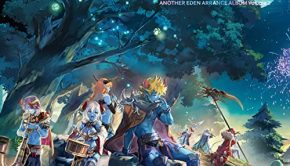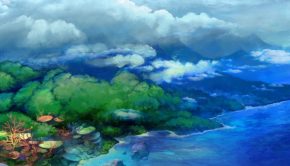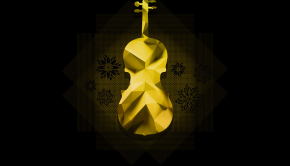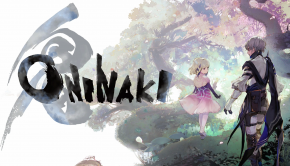Xenosaga Original Soundtrack
 |
Album Title: | Xenosaga Original Soundtrack |
| Record Label: | DigiCube | |
| Catalog No.: | SSCX-10062 (1st Edition) | |
| Release Date: | March 6, 2002 | |
| Purchase: | Buy at eBay |
Commentary
Yasunori Mitsuda – Composer
One must return to one’s failures in order to have confidence.
Although I have worked on many video game scores, as I might have expected, this time I had almost no confidence in myself. I lacked confidence because of the massive scale of the game, its high level of quality, the high expections of those Xeno-fans who have waited for so long, and because I had never composed and arranged for full orchestra before. I approached these new experiences with anxiety and a sense of the weight of my responsibilities. To be honest, this time I did not have the self-confidence to shoulder all of them. But, isn’t this a great chance to enter new territory, I felt, and with that expectation as my sole support, with that alone as sustenance, I went ahead and gave it a try. But, as I had expected, reality was not so kind.
For the first recording session in February, 2001, we had planned on recording the ending “Kokoro,” the insert song “Pain,” and in addition “Nephilim” and a chamber orchestra piece that was to be placed after “Kokoro.” Since I had previously had experience recording with bands and string quartet, and the musicians I had asked were people I had worked with before, the recording progressed without incident, but the arrangement I had done on the chamber piece to be placed after “Kokoro” was terrible, and there was no way that it could be used in the game. (Of course, this piece was discarded, and is not on these CDs.)
The incident caused me to lose all of my confidence, and I felt I would no longer be able to proceed with the large orchestra recording that was to start soon. I don’t know how anyone around me felt, but I had already decided that I would proceed by having someone else do the orchestration. I was running away from reality.
But even with an arranger, I felt I would need to understand the capabilities of an orchestra if I wanted to convey all of the nuances I desired, so I took out and pored over the reference books I hadn’t used since my school days, listened to dozens of classical CDs every day, and stared at full orchestra scores until holes developed in them. I lived that way for half a month. Humans are mysterious in that they can at some point adjust to living in such a manner. Doing so, one sees that things could be worse. With a desire to write music, and the assimilation of the information I had crammed in during that half a month, ideas came to me one after another. I put them into the computer for the time being, and while listening, I came to want to hear them played by a real orchestra. Of course, I was not able to forget the failure of the previous time. This desire existed together with my anxiety that I would get other people involved needlessly again. I escaped these fears by resolving to “not run away, but stand up and face forward.” I had to take responsibility for all of my failures. Furthermore, this kind of chance would never come again. I felt I had to do the arrangements myself, even if I failed and came to regret it. And by overcoming these hardships, I feel that all of the pieces here retain my individuality and that I have taken one step into new territory. I once again felt “glad that I didn’t run away.”
One must return to one’s failures in order to have confidence. During this project I learned those words. Although I could have thought of them before, understanding their true meaning was more difficult than I could have imagined. But it is also certain that with this I have gained a measure of “self-confidence.” Without a doubt, my participation in this project will lead to big changes in my life as a composer. I wish to show my gratitude once again to director and writer Tetsuya Takahashi of Monolith Soft, the one who gave me this opportunity.
P.S. – I would especially like to thank Kenichi Funayama and Mariko Fujiwara, for all their help and comforting during the recording sessions in London. And also, to Steven Lloyd, Colin Rae, and Matt Howe thank you for providing me with advice on the orchestration and supporting me at all times. Thank you from the very bottom of my heart.
Tetsuya Takahashi – Game Director
Going back about 10 years, I had a certain exerience. It was the change from the NES to the SNES, around the time of Final Fantasy IV‘s development.
“The visuals are exceeded by the sound!” It was a time when the BGM of video games, which for so many generations had been at the level of the music put out by cell phones, was going through one evolution after another. After that, games’ contents increased, and the images evolved to match the level of the sound. After a while the Playstation era arrived, and the progress of the visuals was once again surpassed by that of the sound. No wonder, as the approximately 600 megabytes of data were spent mostly on the graphics.
And now, it’s early summer, 2001. The platform has changed to the PlayStation 2, and I once again had that experience. “The visuals are beaten out by the sound!” It happened when Mitsuda came back from London, and I listened to the music mixed from the London Philharmonic sessions. Although we had already decided beforehand that the style would be more like a movie soundtrack, the actual music far surpassed my expectations. At the same time, a thought came to mind: “The music will end up saving many parts of this project.” This project represents a big change in Mitsuda’s sound. Gnosis is a particular highlight. There are many who have already heard it on the production meeting DVD. It plays in the scenes in which the Federation army fights with the Gnosis — the part called S27 among the staff. There were a lot of pieces written to match scenes in the game, but in this case the music preceded the visuals. Even so they ended up matching perfectly. They synchronize together as if created with the other in mind from the first appearance of the Gnosis until the final cut after the man turns white and shatters. Xenosaga was realized because of these mysterious coincidences and the crushing intensity of its supporting music.
These two discs that all of you have are the unfolding of a new world of Mitsuda, different from Chrono Trigger, Chrono Cross, and Xenogears, his representative works.
“The visuals are exceeded by the sound!” I want all of you to experience my shock with your ears and body, no, with all of your senses. At the end, my schedule is tight to a fault, so I would like to explain how grateful I am to Mitsuda, who composed with almost frightening enthusiasm. “Thank you for staying with me to the end. I’ll get a little better on the next one.”
Joanne Hogg – Vocalist
It’s been very exciting to record again with Yas. Especially singing such romantic songs! I nearly cried! Hopefully I can come to Japan sometime and see your country. Until then…my love and greetings to you. Joanne
Translated by Ben Schweitzer. Edited by Ben Schweitzer and Chris Greening. Please do not republish without written permission.
Posted on March 11, 2011 by Ben Schweitzer. Last modified on March 9, 2014.














